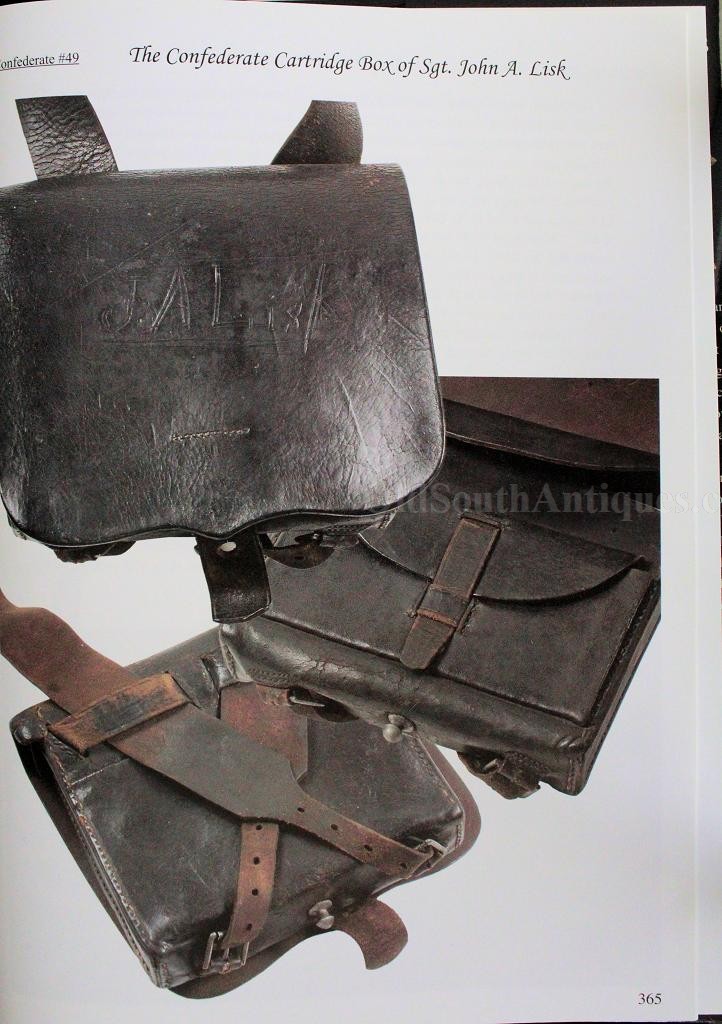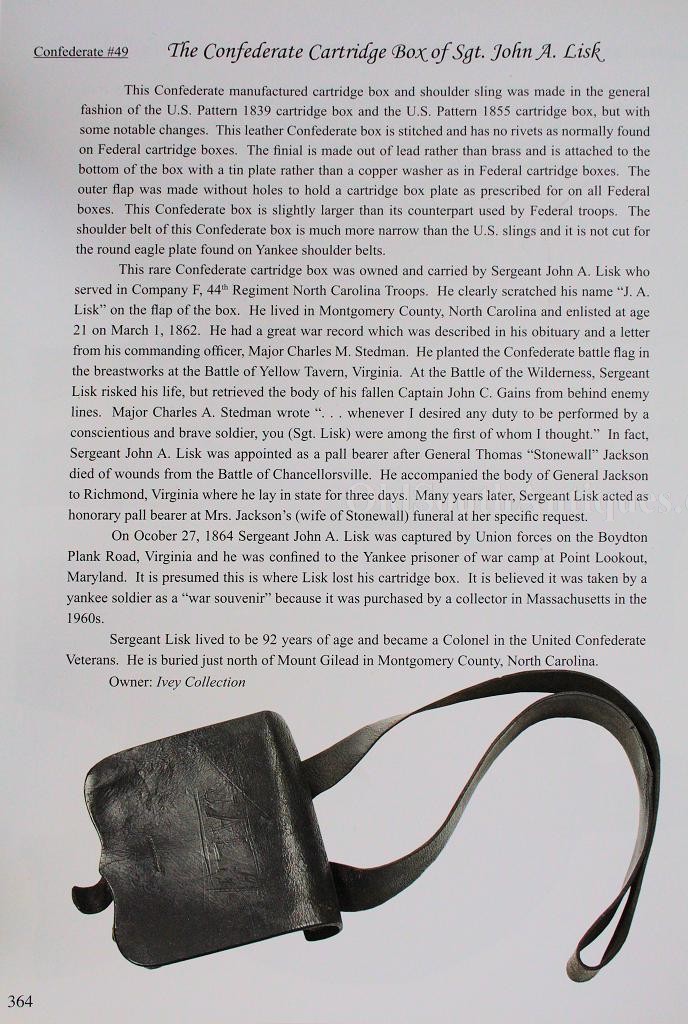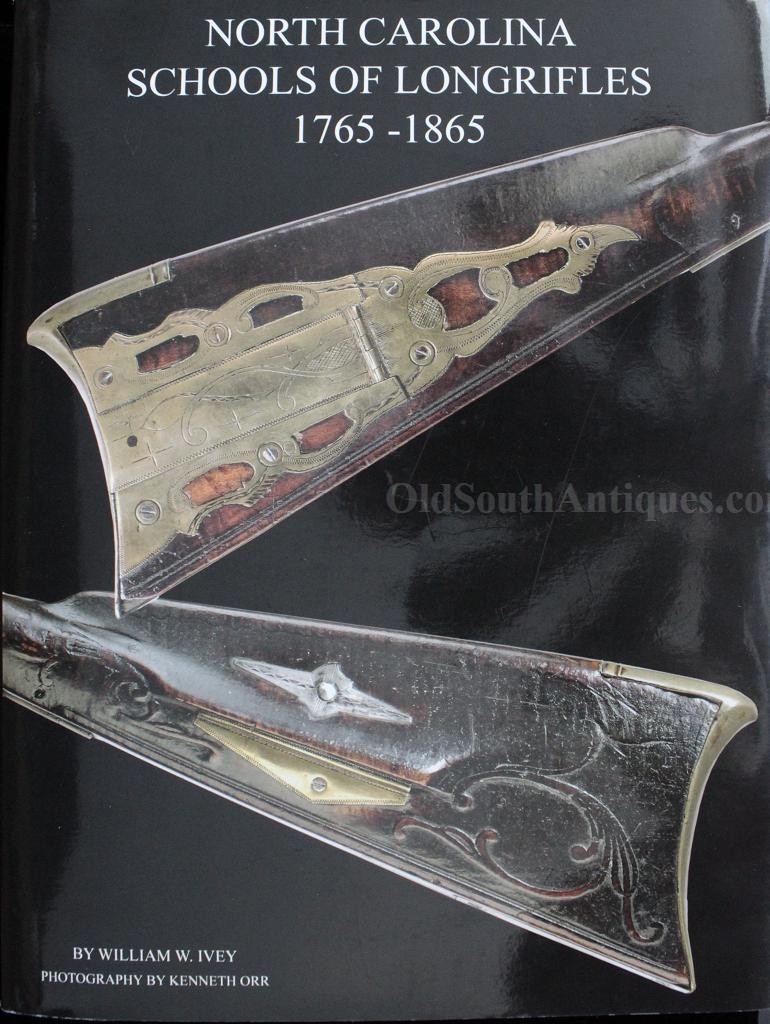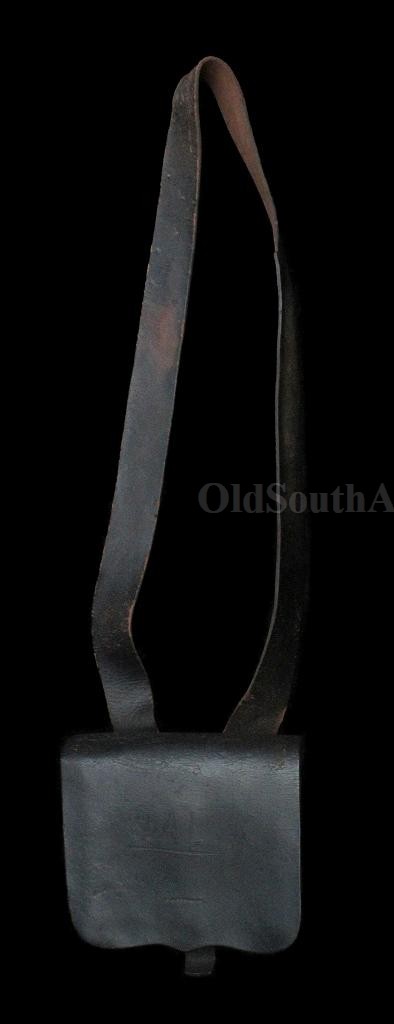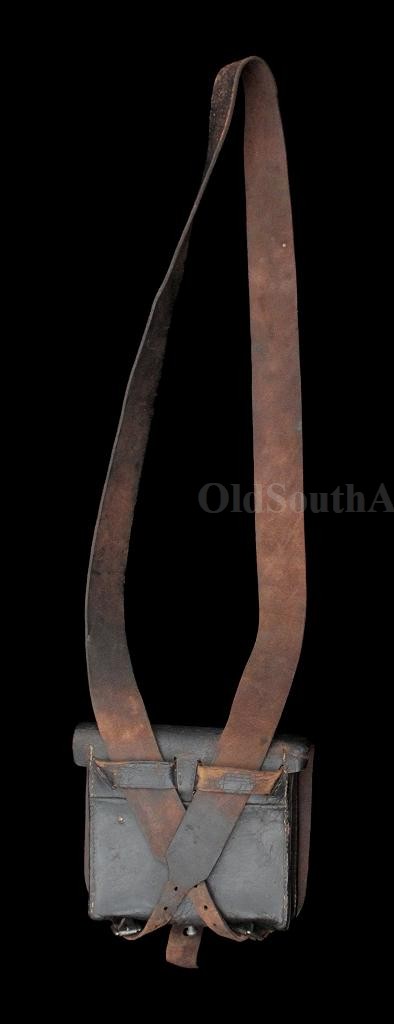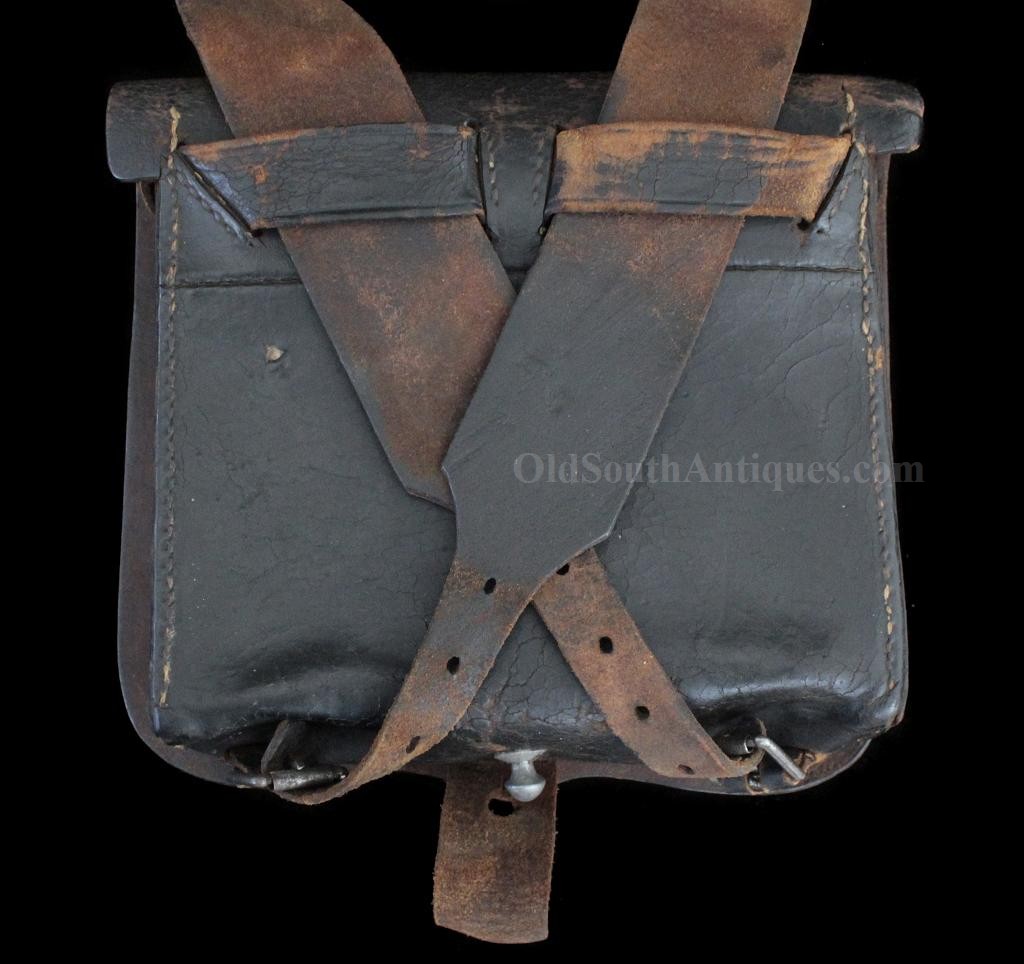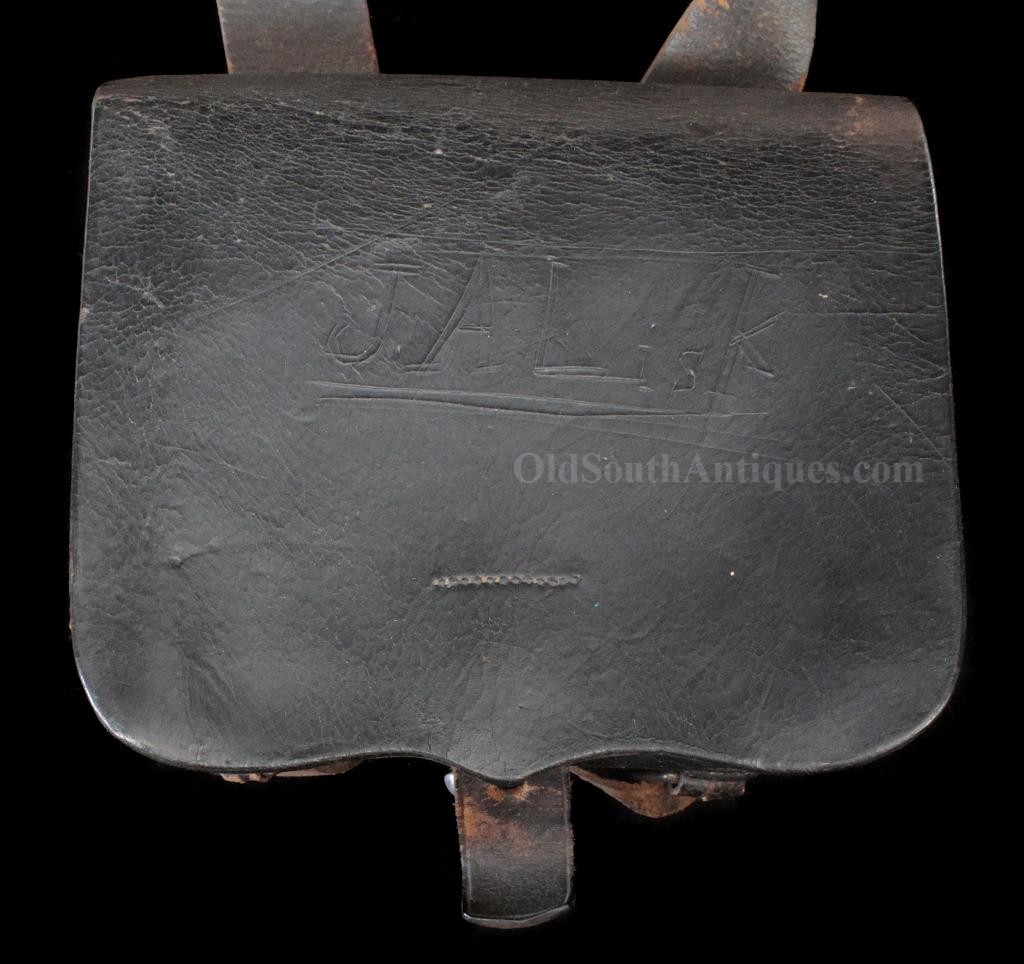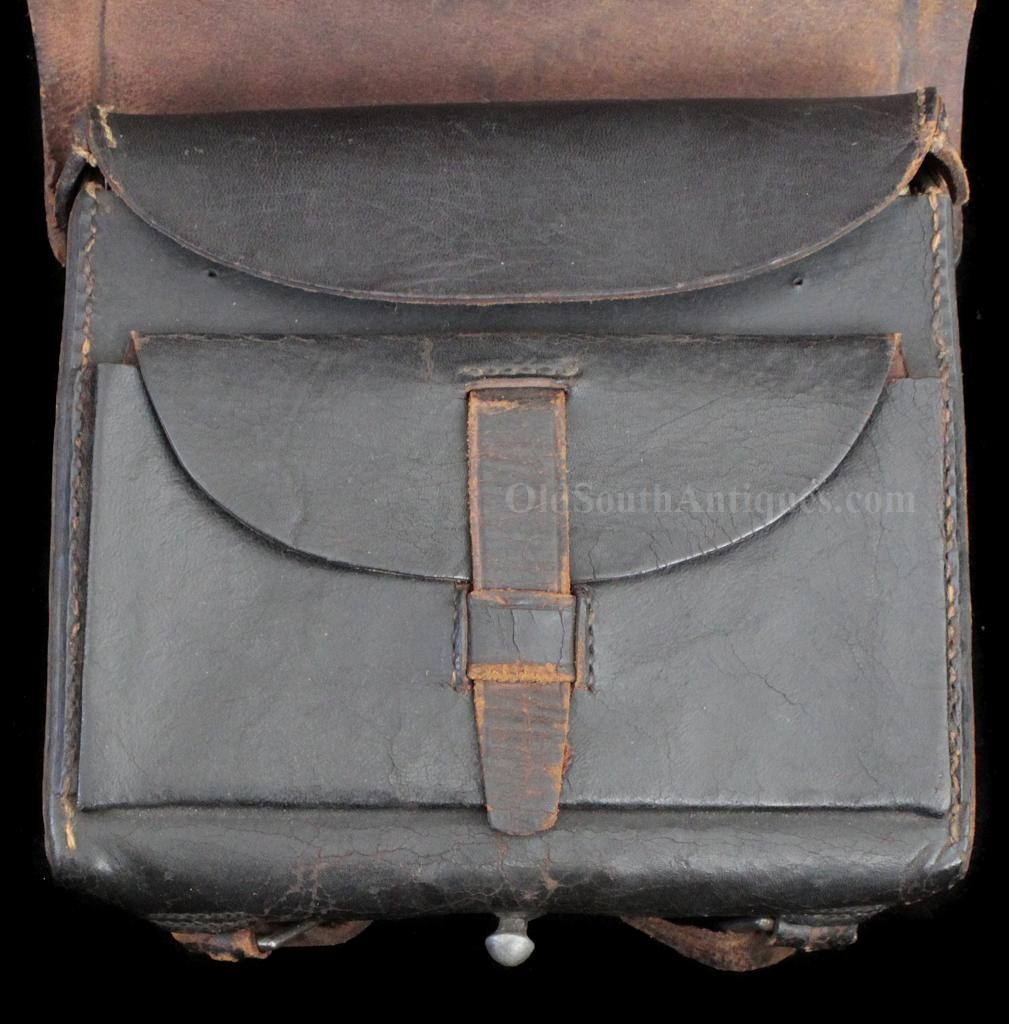
| Catalog | Past Items | Order Info | Terms/Conditions | About Us | Inventory Clearance |
People that are unfamiliar with mid-nineteenth century military weaponry generally have the impression that soldiers carried a powder horn or some variation of one. In reality, soldiers were issued cartridges consisting of a paper tube, filled with a powder charge and ball. These paper cartridges were issued in paper packs of ten. Because they were made of paper, the cartridges were very fragile and even a slight wetting would ruin them; therefore, it was necessary that they be carried in a leather box which served to keep the cartridges dry. The box also served to keep out sparks during the heat of battle. Should a spark enter the box, the resulting explosion would severely injure or kill its owner. Basically, each soldier had a bomb strapped to his waist and only this box to keep it from igniting.
Infantry cartridge boxes had tin liners with compartments on the top row and large openings in the bottom row, in order to hold both loose cartridges and multiple packets of pre-manufactured paper cartridges. Loose paper wrapped cartridges rode in the top compartment for quick access and two more paper wrapped ten packs, complete with percussion caps, rode in the bottom section. When the infantryman had emptied his top compartment, he would remove the tin liners and take out the paper wrapped packets of ten and empty the contents into the top of the container. The percussion caps would be placed in his cap box.
This lead finialed box has the name "J.A. Lisk” deeply scratched into the outer flaps surface. The condition of the box and its original sling is simply perfect, and perfect is not in the least an overstatement; PERFECT!
21 year old, Montgomery County resident John A. Lisk enlisted in Company F, 44th, North Carolina Infantry on March 1st, 1862. His cartridge box is published in William Ivey’s wonderful book, Schools of North Carolina Longrifles 1765-1865 on pages 364, 365 and 369. Though Bill’s book is primarily on North Carolina longrifles, his love of the Confederacy prompted him to include the best CS North Carolina items that he had collected over a lifetime. In the book he quotes the obituary written by his (Lisk’s) commanding officer, Major Charles A Stedman, who wrote: … "whenever I desired any duty to be performed by a conscientious and brave solder, you were among the first of whom I thought”
Stedman’s letter also noted that Lisk had risked his life in the Wilderness to retrieve his fallen Captain John C. Gains from behind enemy lines and that he, (Lisk) had planted the colors on the breastworks at Yellow Tavern. In the last, I believe Major Stedman misspoke and meant to say Globe Tavern. There is much, much more to say for Sergeant Lisk, and I intend to write a full article for publication at a later date.
Lisk was honoured with the task of accompanying Stonewall Jackson’s earthly remains to Richmond, and he was a pallbearer for Mrs. Stonewall Jackson, at here specific request.[i]
Sergeant Lisk was captured on the Plank Road at Petersburg on October 27th, 1864 and sent to Point Lookout P.O.W. Camp. He survived the War Between the States a died in his 92nd year. He is buried in Montgomery County, North Carolina.
As mentioned, Lisk’s cartridge box is perfect. All the stitching remains tight. The end tabs of both the inner and outer flap are intact and remain tightly affixed. The tins are intact and the tool pouch remains in perfect condition. All of the box’s stitching is tight. The strap buckles remain tight, as does the lead closure finial. The original over the shoulder strap is also perfect and strong enough to wear. Flawless!
Copyright © 2025 OldSouthAntiques.com All Rights Reserved.
Privacy Policy | Terms of Use
Powered by Web-Cat Copyright © 1996-2025 GrayCat Systems
